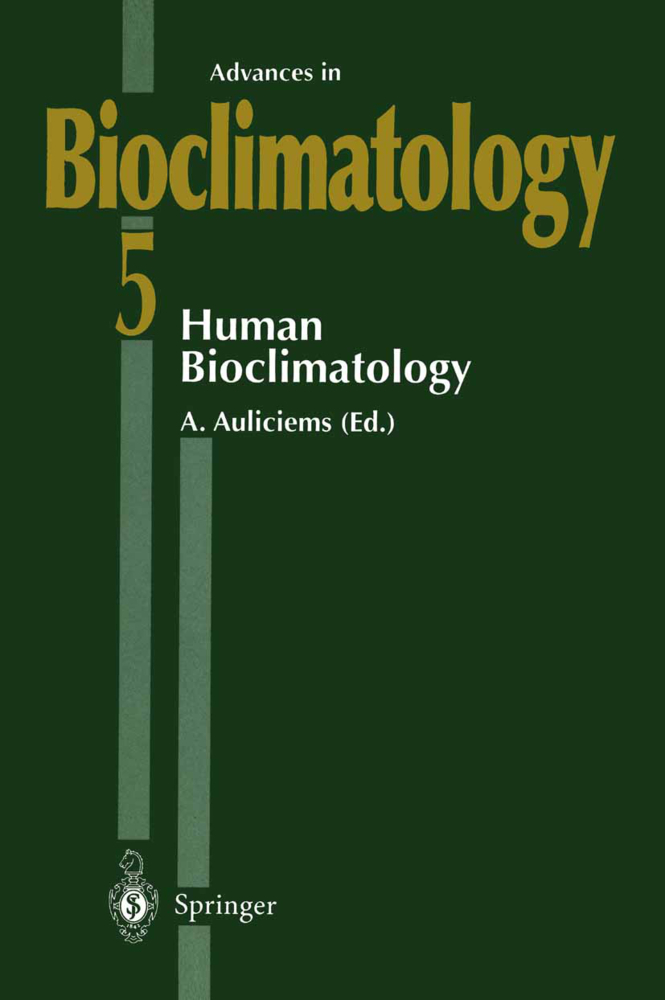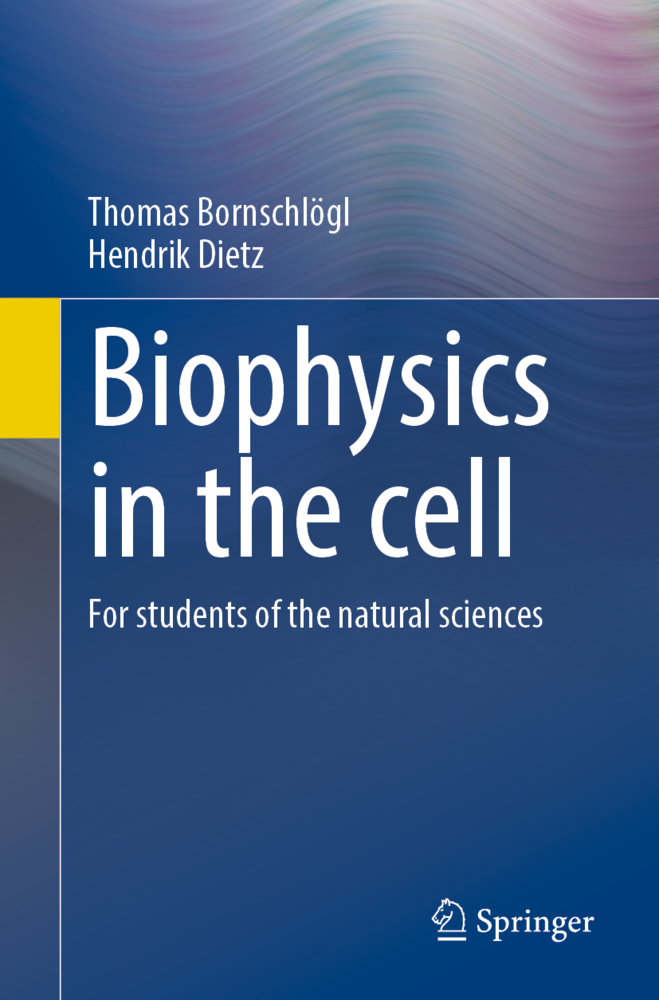Human Bioclimatology
Human Bioclimatology
A. AULICIEMS Living organisms respond to atmospheric variability and variation, and over time morphological and process differentiations occur both within individuals and the species, as well as in the environment itself. In systems language, the concern is with the atmospheric process-response system of energy and matter flows within the biosphere. The study of such interactions between living organ isms and the atmospheric environment falls within the field of bioclimatology, alternatively referred to as biometeorology. Amongst the more readily recognizable study areas under the bioclimatolog that investigate the effects of atmospheric variation and ical umbrella are those variability upon 1. Terrestrial and aquatic ecology (zoological, botanical and ethological), natural resource production and management (including silviculture, agri culture, horticulture, and grassland, wetland, and marine systems). 2. Stress, morbidity and mortality in animals and humans (including physiolog ical and psychological adaptations). 3. The built environment (all aspects of planning, urban design, and architec ture). 4. Economic systems and social activities (including organizational, individual, and group behavior and management). In addition, bioclimatology is very much concerned with the feedback loop, that is both 5. The inadvertent modification of the atmosphere by living systems, especially human, i.e., studies of pollution, changes to atmospheric amenity, and the processes of deterioration of landscape (deforestation and desertification), and 6. The advertent modifications of natural energy and matter flows within urban areas and indoor climate constructions.
Techniques for Measuring Solar Ultraviolet Radiation
1 Introduction
2 Techniques for UV Measurement
3 Calibration Techniques
4 The History of Measurements
5 Networking
6 Using UV Data
7 Conclusion
Appendix A List of Instrument Manufacturers
Appendix B List of National Standards Laboratories and Other Sources of Standard Lamps
AppendixC Glossary of Terms
References
Thermal Adaptation and Variable Indoor Climate Control
1 Introduction
2 The Biophysics and Thermophysiology of Comfort
3 An Adaptive Model
4 An Evaluation of Air Conditioning
5 Summary
References
Sick Building Syndrome and Appropriate Design
1 Introduction
2 Physical, Chemical and Biological Hypotheses of SBS
3 Psychosocial Dimensions of SBS
4 Appropriate Design for the Avoidance of SBS: Task Conditioning
5 Conclusion
References
Bioclimatic Architecture and Solar Energy
1 Introduction
2 Bioclimatic Architecture
3 Energy Conservation
4 Solar-Heated Houses
5 Design Methods
6 Integration
7 The CPZ Method
8 Recent Developments
9 Current Issues
10 Conclusions
References
Migration, Recreation and Tourism: Human Responses to Climate Differences
1 Introduction
2 Seasonal Migration
3 Climate as an Influence on the Decision to Travel
4 Indicators of Tourism-Climate Interdependency
5 Human Adaptation: Acclimatization, Preparation and Precaution
6 Conclusion
References
Climate and Human Mortality: Relationships and Mitigating Measures
1 Introduction
2 What Is Affecting Weather-Related Mortality?
3 Weather-Related Mortality in a Warmer World
4 Mitigating Measures to Lessen the Impact of Weather-Related Mortality
References.
Human Bioclimatology: An Introduction
ReferencesTechniques for Measuring Solar Ultraviolet Radiation
1 Introduction
2 Techniques for UV Measurement
3 Calibration Techniques
4 The History of Measurements
5 Networking
6 Using UV Data
7 Conclusion
Appendix A List of Instrument Manufacturers
Appendix B List of National Standards Laboratories and Other Sources of Standard Lamps
AppendixC Glossary of Terms
References
Thermal Adaptation and Variable Indoor Climate Control
1 Introduction
2 The Biophysics and Thermophysiology of Comfort
3 An Adaptive Model
4 An Evaluation of Air Conditioning
5 Summary
References
Sick Building Syndrome and Appropriate Design
1 Introduction
2 Physical, Chemical and Biological Hypotheses of SBS
3 Psychosocial Dimensions of SBS
4 Appropriate Design for the Avoidance of SBS: Task Conditioning
5 Conclusion
References
Bioclimatic Architecture and Solar Energy
1 Introduction
2 Bioclimatic Architecture
3 Energy Conservation
4 Solar-Heated Houses
5 Design Methods
6 Integration
7 The CPZ Method
8 Recent Developments
9 Current Issues
10 Conclusions
References
Migration, Recreation and Tourism: Human Responses to Climate Differences
1 Introduction
2 Seasonal Migration
3 Climate as an Influence on the Decision to Travel
4 Indicators of Tourism-Climate Interdependency
5 Human Adaptation: Acclimatization, Preparation and Precaution
6 Conclusion
References
Climate and Human Mortality: Relationships and Mitigating Measures
1 Introduction
2 What Is Affecting Weather-Related Mortality?
3 Weather-Related Mortality in a Warmer World
4 Mitigating Measures to Lessen the Impact of Weather-Related Mortality
References.
Auliciems, Andris
Stanhill, Gerald
| ISBN | 978-3-642-80421-2 |
|---|---|
| Artikelnummer | 9783642804212 |
| Medientyp | Buch |
| Auflage | Softcover reprint of the original 1st ed. 1998 |
| Copyrightjahr | 2012 |
| Verlag | Springer, Berlin |
| Umfang | XII, 184 Seiten |
| Abbildungen | XII, 184 p. 9 illus. |
| Sprache | Englisch |










